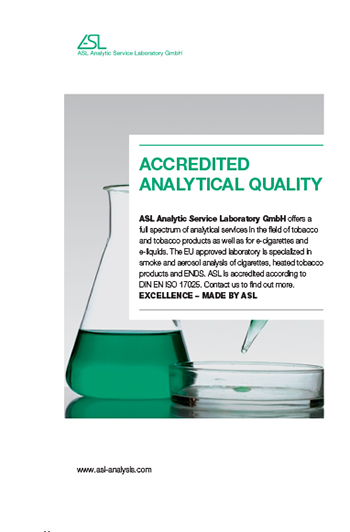The Irreconcilable Conflict Principle
- Also in TR Clive Bates Print Edition
- November 1, 2020
- 0
- 2
- 11 minutes read


The governing idea of tobacco control
By Clive Bates
Sometimes defining an iron rule or governing idea and reorganizing our understanding of the world around it can be immensely revealing. Einstein developed the special theory of relativity from an assumption that the speed of light in a vacuum is unwaveringly constant. The most surprising results follow from that. Darwin showed that a simple mechanism, variation and natural selection, could explain much of the astonishing complexity of the natural world. Governing ideas are found everywhere: supply, demand and prices in economics; innocent-until-proven-guilty in criminal justice; and mutually assured destruction in arms control are further examples.
So, is there a governing idea in tobacco policy? Something that shapes everything and means that the world is understood through rigorous application of that rule? I think there is, but it is playing an ever larger, more polarizing and counterproductive role. The starting point is Article 5.3 of the World Health Organization Framework Convention on Tobacco Control (FCTC). Though often overstated, Article 5.3 is fairly innocuous:
In setting and implementing their public health policies with respect to tobacco control, Parties shall act to protect these policies from commercial and other vested interests of the tobacco industry in accordance with national law.
When read as originally intended by the FCTC drafters in 2003, this aims, quite reasonably, to guard against the improper commercial influence of Big Tobacco on public health policy. There is nothing wrong with that. Many governments would quite happily apply the same principle to Big Oil in climate change policy or Big Pharma in healthcare policy. It is essentially an expression of good practice in policymaking.
But Article 5.3 didn’t stop there. In 2008, the concept was developed into Guidelines for the implementation of Article 5.3. Note the title—it does not suggest new treaty provisions are introduced but that the guidelines will implement the treaty as it is. However, the guidelines do more than this. Much more. They set out four guiding principles for Article 5.3, and the first of these is the most troubling:
Principle 1: There is a fundamental and irreconcilable conflict between the tobacco industry’s interests and public health policy interests.
Wow—that’s quite a statement. Let us refer to this as the “irreconcilable conflict principle.” First, it is qualitatively different from Article 5.3: It is a finding of fact rather than a principle that governs the process of policymaking. The finding is also permanent and inescapable—under this principle, no matter what the tobacco industry does or becomes, its actions will always be in conflict with public health. This is not merely expressed as a cautionary note from history, a lesson for which there is at least some supporting evidence. It is binding on the future and expressed as a permanent truth.
I think the irreconcilable conflict principle is the governing idea, the iron rule of tobacco control. I do not wish to imply that this emerged in 2008 or because of these guidelines. The direction of causation is the other way. This was coded into the guidelines because it is the governing idea of tobacco control. In agreeing to this at the urging of tobacco control activists, complacent or complicit bureaucrats greatly extended the reach of the FCTC, apparently without appreciating the potential negative consequences.
This means that anything that is in the interests of tobacco companies must, by definition, be bad for public health. It means nothing can be both in interests of public health and the tobacco industry. In the same way that Einstein assumed the speed of light was a constant and his understanding of the world was reshaped around that, so we see tobacco control reshaping its worldview around the irreconcilable conflict principle. The important difference is that Einstein was basically right, and his radical insight advanced human understanding. For tobacco control, this governing idea is wrong—at least some of the time and in several ways. Consider the following implications.
First, the irreconcilable conflict principle drives implausible explanatory theories. The experience of snus in Sweden clearly challenges the guiding principle: Widespread use of a tobacco product made by tobacco companies is responsible for Sweden’s unusually low smoking prevalence and with that, an unusually low level of cancer and heart disease in the male population. This alone should be enough to justify abandoning the principle. Yet Sweden’s public health establishment has been driven to find ever more desperately implausible reasons to explain the observed reality. These include absurd ideas about the role of Sweden’s generous paternity leave system and Sweden’s involvement in the Second World War. Tobacco control advocates have consistently opposed any lifting of the European Union ban on snus because to do so would be to violate their guiding idea, the irreconcilable conflict principle.
Second, the irreconcilable conflict principle is shifting the goals of tobacco control. With the rise of vaping, tobacco control objectives have steadily shifted from tackling the health consequences of smoking, something that can be eliminated with technology. Now they increasingly stress opposition to nicotine use itself, something that is intrinsic to the industry. In this way, the industry can always be at fault and the inviolability of the principle maintained.
Third, the irreconcilable conflict principle distorts science. If your iron rule is that nothing good ever comes from tobacco companies, then you are motivated to develop science demonstrating conflicts with public health. So, we see more scientists claiming that there is no difference in risk between smoking and vaping or that the data are so uncertain that nothing is or can be known about relative risk. Both are plainly wrong. Randomized controlled trials (RCTs) show vaping is more effective for smoking cessation than nicotine-replacement therapy. After years of lamenting the paucity of vaping RCTs, tobacco control activists have pivoted to express doubts about their validity or redefined quitting smoking to mean quitting nicotine.
Fourth, the irreconcilable conflict principle has made mainstream tobacco controllers into enemies of innovation. The U.S. Food and Drug Administration (FDA) recently granted the right to a tobacco company to claim that its heated-tobacco product was a reduced-risk product after concluding that it was appropriate for the protection of public health. A calamity: that would violate the irreconcilable conflict principle. Predictably, this triggered a backlash of denial and desperate arguments to show that the FDA was somehow mistaken and that there was no benefit to public health even though FDA was merely allowing a statement of the obvious to be made.
Fifth, the irreconcilable conflict principle has created a self-amplifying echo chamber in tobacco control. Suppose there are people in public health who do think that some of the things done by tobacco companies are positive. Under the guiding principle, how can that be unless such people have a conflict of interest or are in some way working to further the interests of Big Tobacco? We can see this in some of the extraordinary efforts that tobacco control fora have made to exclude these dissonant voices. That includes the hurdles to achieving observer status at the FCTC itself and attending major events like the World Conference on Tobacco or Health. This conference has eligibility criteria explicitly based on the irreconcilable conflict principle and contains a catch-all exclusion for anyone who “works to promote tobacco products, their sale or to limit their regulation.” What if you think (like me, for example) that it would be good for public health if smokers switched to snus or heated-tobacco products and that regulation should be proportionate to risk rather than “unlimited”? The aim is to define this norm-challenging perspective as pro-industry and therefore anti-health and thereby to keep it out of earshot. An Australian anti-tobacco activist has even proposed an “Article 5.3 for civil society,” in which “reinforcing Big Tobacco’s pariah status” would be the purpose.
Sixth, the irreconcilable conflict principle distorts rather than protects policymaking. Those who adhere to the principle cannot recommend policies that would encourage low-risk nicotine products at the expense of cigarettes as that would be to accept that they have a role in public health. So we see that tobacco control activists and many academics have adopted hostile regulatory paradigms for reduced-risk products: prohibition, pharmaceutical or equivalence to cigarettes. All are designed to reject the notion of any benefit from reduced-risk tobacco products. When Bloomberg Philanthropies recently advertised a new round of tobacco control grants, it stressed the “passage and implementation of Article 5.3” and linked this to Michael Bloomberg’s preferred MPOWER policy framework for tobacco control. Mr. Bloomberg is on record favoring vaping prohibition, and he sees no role for reduced-risk products. Perhaps public health policies now need to be protected from these vested interests?
There should be one guiding principle for tobacco control: to reduce harm to the greatest extent and as quickly as possible. The irreconcilable conflict principle is a relic of the past and fails a modern reality check. It is the reason why tobacco control activists may now be doing more harm than good.




